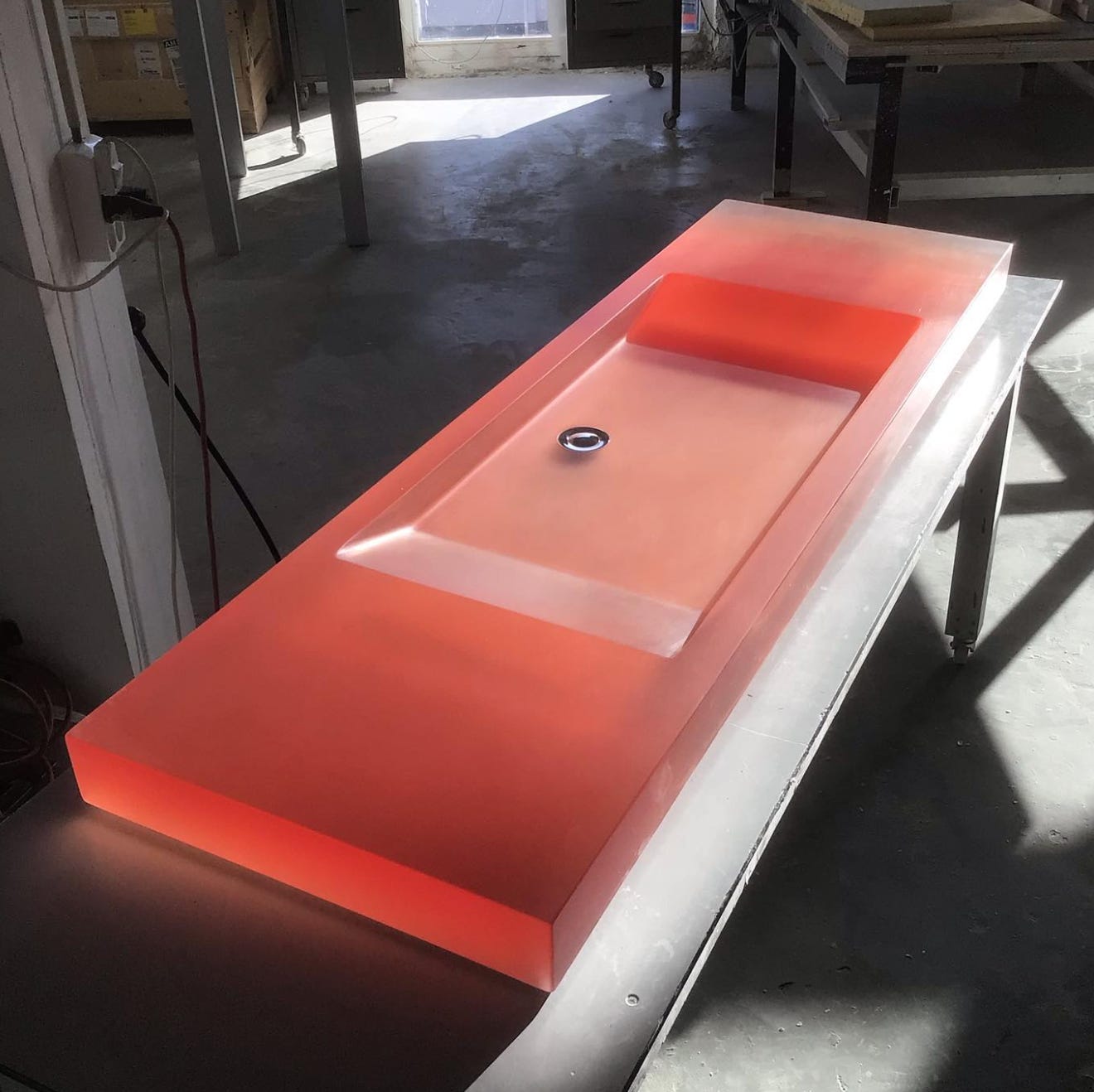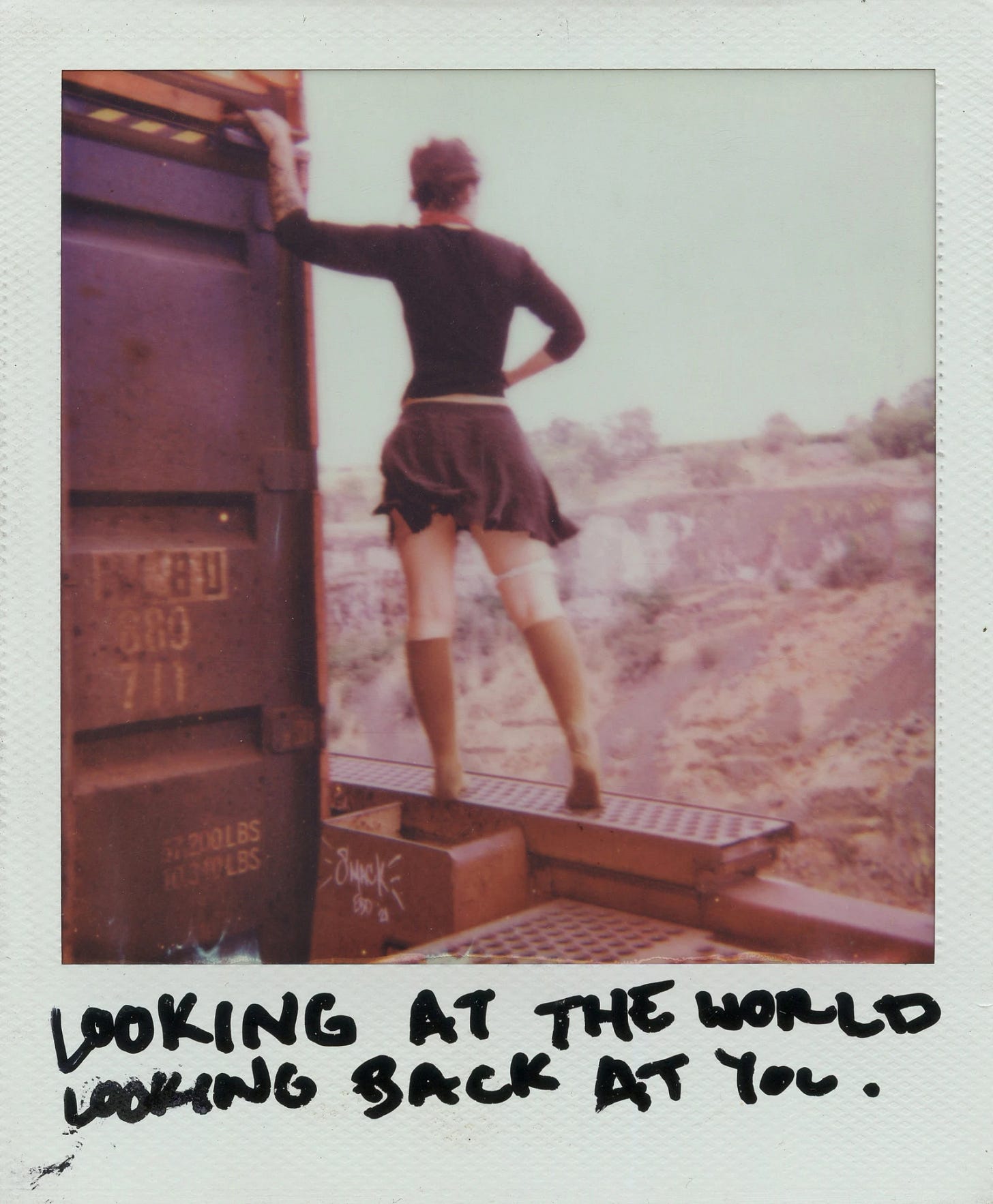(016) "I'm Back"
Vessels for creativity, translucent sinks, punk runaways, nomadic vases, the unlikelihood of love
Hi new and old subscribers,
I took a little break over the summer from compulsively reading hundreds of articles and I have to admit, it was nice. Ignorance is bliss. But perhaps, more than ignorance being bliss, is the necessity of limiting one’s input in order to have more inspired output. We consume more information and media than we can possibly comprehend each and everyday.
Detaching shows you what actually meant something, what really resonated or changed you. You’ll be able to recall it naturally and form something new from within… no moodboard, no cap ;)
On the agenda: Rick Rubin’s advice for creativity, the most astounding sinks known to man, figuring out new directions, punk runaway kids of the 00s, how identity stops us from being able to have conversations, nomadic vases from Japan, discovering more fashion photography and the vastness of space and immensity of time.
Releasing Creative Output
Q: Do you have any tips for creative people who are stuck overthinking everything and want to create more freely?
A: Yeah. One thing I would suggest is finding a way to make a lot of things and put them out, just to get a cycle going, without even thinking that it’s for anybody or that it’s going to accomplish anything. But every time you put something out, it makes it that much easier to put something else out. So you’re creating a sense of freedom in making things and putting them out. And if you make something that you’re excited enough to play for your friend who’s got good taste, it’s time to put it out. If you are ready to play it for your friend, that’s the ultimate goal of any of the things we’re making. And I play things for my friend early. As soon as I’m excited, I might play it for my friend, way before it’s really come into all that it could be.
— Rick Rubin in Creativity, according to Rick Rubin
N.b. You may have read Rick’s new book and if you haven’t, you definitely should. It’s written in a no-frills way with some timeless thoughts on creativity. Paraphrasing a few ideas I loved:
Using rules as tools — Each project has a palette. That palette is a set of constraints we have chosen to impose.
Always aim for generativity, to spark an idea in others. Work that prompts someone to go and make something else is a collaboration… and transcends space and time. This reminds me of something that Charles Broskoski, co-founder of Are.na said: “The most generous thing you can do as an artist is make tools for others”.
Curiosity doesn’t take sides or insist on a single way of doing things. It’s open to new ways, seeking to arrive at original insights. The artist’s goal is to keep themselves pure and unattached — a vessel for channeling, translating, extracting and expressing.
Vincent de Rijk IS NOT OKAY

I dream in Vincent de Rijk. I have never wanted a sink more, nor his “Liquidish” bowls. Wtaf. He is stocked at a really cool internet store that features the work of other incredible designers like Sabine Marcelis.
Finding a Direction
Every so often I think of this Jimmy Iovine quote:
“When you’re a race horse, the reason they put blinders on these things is because if you look at the horse on the left or the right, you’re going to miss a step. That’s why the horses have blinders on. And that’s what people should have. When you’re running after something, you should not look left or right — what does this person think, what does that person think? No. Go.”
This is excellent advice when you are absolutely certain about what you’re trying to achieve. But what about the part before that, the muddy waters that we all inhabit at some point… trying to figure out what that something is, and how to get there.
Here are a few different approaches that I find useful:
Make learning the goal — If you’re going to meander, try to ensure that the underlying driving force is to increase your rate of learning. The theme becomes learning itself rather than any particular discipline or skill that you’re applying it to. Otherwise, it’s all too easy to get lost in the sauce and overwhelmed by the infinite paths you could follow. You end up with a bit of lots of things versus depth, expertise or something to really show for it. See: Infinite Games in Issue
Just make a decision — At some point, it’s more advantageous to just choose *something* and focus all of your energy on it, even if you’re not entirely sure it’s the right choice. You know what they say — any kind of action is better than inaction; the point is to move. And by moving, we increase our chances of failure, the ultimate learning. This might seem somewhat counterintuitive as most of us are trying not to fail, but once you’ve actually failed a few times, you’re free to really succeed.
Be willing to be humbled — What stops people from making a million dollars is that they make 100k. Success stops you from achieving your goals, not failure. The process of coming down from relative success and losing that feeling of competency and status can be excruciating, but necessary if you want to climb an even higher mountain. You have to embrace this feeling (and a long time horizon) so that other temptations don’t suppress you from what you could accomplish.
00s American Runaway Kids by Mike Brodie
Mike Brodie left home at 17, hopping a freight train to Florida. His new book, Polaroid Kidd (2023) captures his time in the runaway punk scene of the early 2000s. It was released this week at Dashwood, the best bookstore in New York. I found his project poignant and fascinating.
“Most riders initially attracted to this life are typically 16-25-year-old punks that have poor relationships with their father, or no father at all. The lure of rails might offer hope, romance, redemption; some find it, but most don't. And ironically, most riders who live past their 30s and 40s denounce the lifestyle altogether, settle down, have children, cover up or get tattoos removed. Most won’t admit, but it’s what everyone was chasing all along: true love, a relationship, family, and permanence.”
— Mike Brodie in i-D

Stop Identifying
“More generally, you can have a fruitful discussion about a topic only if it doesn't engage the identities of any of the participants. What makes politics and religion such minefields is that they engage so many people's identities […]
The most intriguing thing about this theory, if it's right, is that it explains not merely which kinds of discussions to avoid, but how to have better ideas. If people can't think clearly about anything that has become part of their identity, then all other things being equal, the best plan is to let as few things into your identity as possible. [2] Most people reading this will already be fairly tolerant. But there is a step beyond thinking of yourself as x but tolerating y: not even to consider yourself an x. The more labels you have for yourself, the dumber they make you.”
— Paul Graham in his essay “Keep Your Identity Small”
D-BROS VASES
I came across these vases in one of my favourite Tokyo florists: Aoyama Flower Market. I am absolutely obsessed with them as I used to fixate on vases as a symbol of the achievement of rootedness. This is arguably the first nomadic vase out there (it’s practically weightless and stores perfectly flat), and it has a beautiful story. Paying attention is everything.
Origin story (translated from Japanese):
“One day, a designer was working in a department facing a garden with a large cherry tree in the middle. My job is to design labels for shampoo refill packages. Put some water in a plastic container so that it doesn't fall over, and put some labels on it.
Eventually, having finished his work for the day, he left his desk and went home. The next morning when he came to the office, he found a single flower in the container. Another designer had picked flowers blooming in the garden and casually put them in. “This is good.”
At first, I tried graphic design for something with a sloppy shape. But something is boring. Just designing the surface, there is no interest as a form.
One day, after half a year, I got a hint from the compression pack of a futon and came up with the idea of compressing the vinyl and making the film into a vase shape. As a test, I drew a Venetian glass-like pattern on it and thermally compressed it with an iron. In this way, the flower-based product was completed. About a year has passed since the moment I accidentally stopped my eyes one day.”
Do Be Do Represents
Discovered a lot of cool campaigns and photography from Do Be Do Represents, who rep people like photographer Jonny Dufort (he recently photographed THAT Jacquemus campaign) and Tyrone Lebon of Frank Ocean’s iconic Nikes music video.
The Unlikelihood of Love
“Against the odds is after all how most of love happens. Love is always unlikely, and statistically nearly impossible, a bizarre and anxious triumph whether we connect with someone for a night or for a lifetime.”
— From Griefbacon’s essay about love and how much she hated Before Midnight
And last but not least, a thought in a similar vein from Ann Druyan, Carl Sagan’s wife. I remember reading this in an interview with her in Violet when I was a teenager:
“Every single moment that we were alive and we were together was miraculous — not miraculous in the sense of inexplicable or supernatural. We knew we were beneficiaries of chance… That pure chance could be so generous and so kind… That we could find each other, as Carl wrote so beautifully in Cosmos, you know, in the vastness of space and the immensity of time… That we could be together for twenty years.
That is something which sustains me and it’s much more meaningful… The way he treated me and the way I treated him, the way we took care of each other and our family, while he lived. That is so much more important than the idea I will see him someday. I don't think I'll ever see Carl again. But I saw him. We saw each other. We found each other in the cosmos, and that was wonderful.”












In a weird turn of events, your return to writing was my introduction to your writing, and what a blinder of an article you wrote. Naturally I am really grateful to have discovered and subscribed to your stack. Looking forward to reading the next ones!
Great round up, as always — and welcome back. Love the summary of “The Creative Act.” I wrote a few weeks ago how it helped me distill my ethos on parenting. Funny how those transmissions Rubin writes about work…
(Here it is, if curious: https://cowwedoin.substack.com/p/the-creative-act-of-parenting)